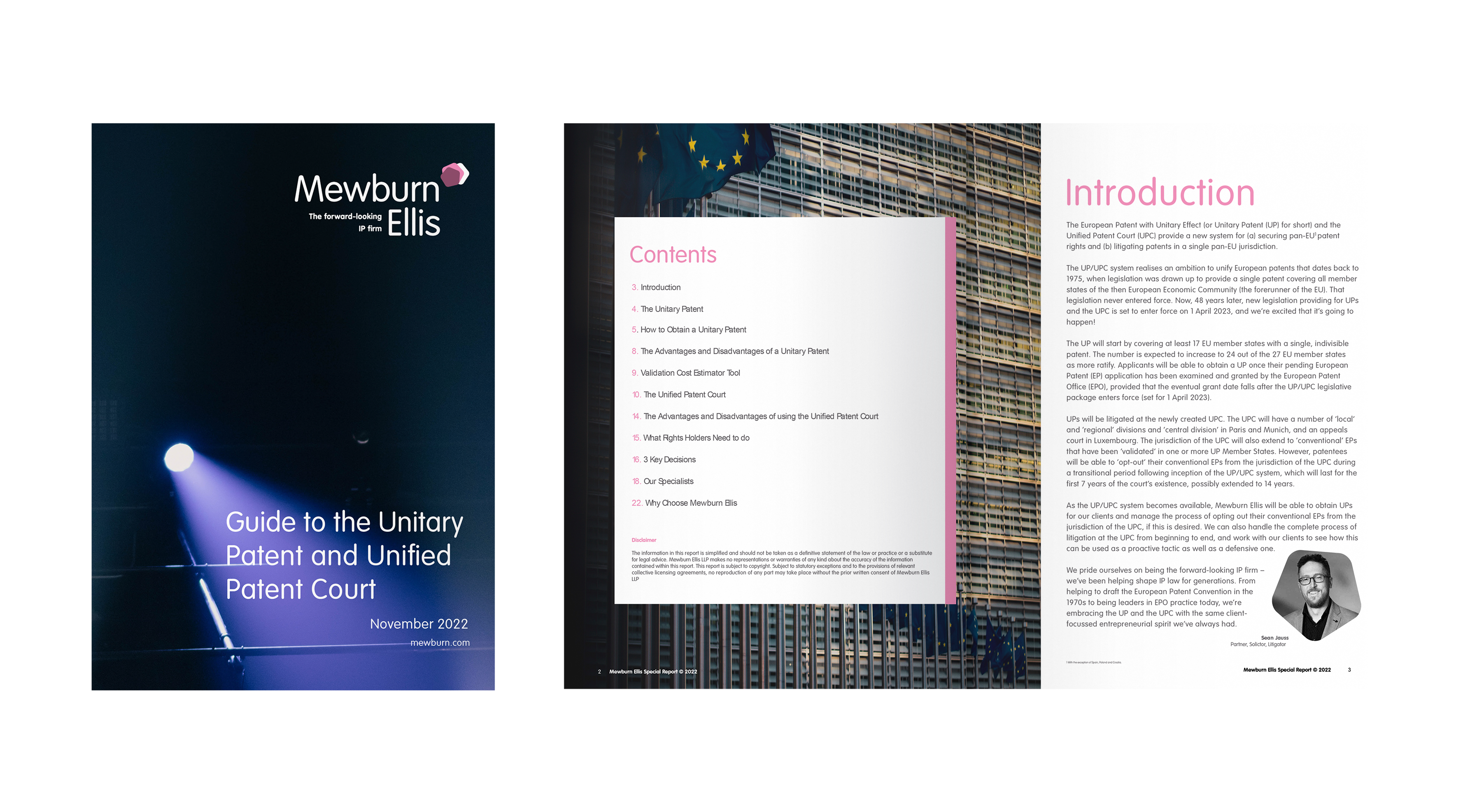The UPC is now four months old and the Court of First Instance is already quite busy. As of 4 October 2023, 46 orders have been published on the UPC’s “Decisions and Orders” webpage. Many are orders for preliminary measures such as preliminary injunctions, while others relate to opt-out status, the admissibility of revocation actions filed at the Central Division and the criteria for disclosing written pleadings and evidence to the public. What patterns and themes emerge?
Preliminary measures – fast, and sometimes without security payment or despite a protective letter
There are four interesting cases, heard by four different local divisions, where the patentee has requested preliminary measures. In three cases, the preliminary measures were granted.
In June, the Milan Local Division granted Oerlikon Textile’s application to preserve evidence (“saisie-contrefaçon”) in Oerlikon Textile GmbH’s v. Bhagat Group (order 552793_2023). Oerlikon saw a machine being exhibited by the Bhagat Group at an international textile fair, “ITMA” in Rho, Italy, which it suspected of infringing its European patent EP2145848B1 for a "False twist texturing machine." On 13 June 2023, supported by photographs, video evidence and a technical opinion, Oerlikon applied for an order to preserve evidence. The application was immediately handed to the standing judge, under Rule 194 RoP, in view of the “extreme urgency” of the matter, because the fair was ending the next day. On 14 June 2023, the standing judge, Ms Mélanie Bessaud, ordered the preservation of the evidence and authorised a named expert to go to the ITMA 2023 fair and acquire technical and commercial evidence. This case shows that the UPC can act extremely quickly to grant saisie orders in cases where urgency matters.
Interestingly, Oerlikon was ordered to pay the prescribed fee, under Rule 192.5 RoP, after the preservation of evidence was ordered (by 16 June 2023). However, in another case where preliminary measures were granted, no security payment was required at all:
In the latest instalment of its litigation with NanoString Technologies, Inc., the Munich Local Division granted 10x Genomics, Inc. a preliminary injunction, across all 17 UPC states, to prevent NanoString from selling its CosMx Spatial Molecular Imager instruments and reagents, and from providing services that use them (10x Genomics, Inc v. NanoString Technologies, Inc.; ACT_459746/2023). In the first headnote, the decision states that the court must consider the validity of the patent to be an “overwhelming probability” in order to grant provisional measures. This may explain the length of the hearing, which spanned two days, and the depth at which the novelty and inventive step of the claims was considered. The panel also exercised its discretion under Rule 211.5 RoP not to demand a security payment from 10x Genomics: The decision noted an absence of evidence that the applicants (i.e., 10x Genomics) would be unable to pay any compensation claim to NanoString in the event of the injunction being subsequently lifted.
10x Genomics successfully obtained the preliminary injunction despite a ‘protective letter’ that NanoString had filed beforehand (see our article on protective letters here). At least NanoString were invited to make its case against the preliminary injunction at the hearing. Thus, the protective letter served its purpose. In contrast, in myStromer AG v. RevoltZycling AG (Order 525740/2023), the Düsseldorf Local Division awarded a preliminary injunction to myStromer without inviting RevoltZycling to a hearing. The order provides comments on why RevoltZycling’s protective letter was substantively ineffective:
RevoltZycling’s protective letter argued non-infringement and exhaustion of patent rights. It argued that myStromer’s European patent defined a direct connection between certain elements of the claimed bicycle frame, but that the corresponding elements of the Revolt bike frame were connected differently. However, the panel did not agree that the claims required this direct connection and they found no exhaustion to have occurred. Moreover, the order states that the protective letter did not cite any relevant prior art to challenge the patent’s validity. (In this case, the court did order myStromer to make a security payment, of €500k, within 10 days.) This preliminary injunction, which was ordered without inviting the respondent to a hearing, indicates the importance of investing sufficient time in preparing any protective letters, to make the pre-emptive non-infringement and invalidity arguments as robust as possible.
These three cases in which interim measures were granted suggest that the UPC can be a favourable forum for obtaining preliminary measures.
However, the UPC is not always available. In a fourth case relating to preliminary measures, AIM Sport’s injunction request was rejected by the Helsinki Local Division because its European patent was found to be outside the UPC’s jurisdiction (AIM Sport Vision AG v Supponor Limited, order not yet published):
AIM Sport had opted-out the underlying European patent, EP3295663, in May 2023, shortly before the UPC opened its doors. On 5 July 2023, AIM Sport filed a withdrawal of the opt-out. However, AIM Sport had commenced proceedings to enforce this patent at the German national courts in 2022 and these national enforcement proceedings appear to be ongoing. It seems that the Helsinki Local Division has decided that the withdrawal of the opt-out was invalid because of the pending national enforcement proceedings (Article 83.4 UPCA). Therefore, the UPC was not competent to hear the case.
Which UPC Division? Which language?
Despite English being available as a language of proceedings, the majority of UPC cases so far have been heard by the Local Divisions in their ‘native’ language: German in the Munich and Düsseldorf Local Divisions and Italian in the Milan Local Division. Why? Only the applicants in each case can say for sure why they have chosen the local language. However, we speculate that this tactic may be used seize a panel that was most familiar to the litigants.
However, a final case illustrates the tension between the competence of the Central Division to hear ‘standalone’ revocation actions, and the competence of the Local Divisions to hear counterclaims for revocation, even when both are in the same city – Munich. In Amgen, Inc. v. Sanofi-Aventis Deutschland GmbH, Sanofi had lodged their case for revocation at the Registry in Luxembourg, on 1 June 2023, as the UPC ‘opened its doors’. Just half an hour later, Amgen lodged their infringement suit at the Munich sub-Registry. Teething problems with the electronic case management system meant that both parties needed to file hard copies at the registries, instead of filing electronically. In order 560432/2023, the Munich Central Division found that Sanofi’s revocation action was properly filed at the Munich Central Division, which is therefore competent to hear that part of the dispute. Had it been lodged after Amgen’s infringement suit, the revocation action would have needed to be filed as a counterclaim at the Local Division i.e. the admissibility of the central revocation action turned on a matter of minutes. This case illustrates the time sensitive nature of the question of jurisdiction and also suggests that this particular dispute will remain bifurcated, with the Munich Central Division handling the revocation action while the Munich Local Division proceeds with the infringement suit. This could lead to one part of the dispute being stayed pending the outcome of the other part.
When can the public view the written pleadings and evidence from a case?
Rule 262.1(b) RoP states that written pleadings and evidence “shall be available to the public upon reasoned request to the Registry”. However, the Rules of Procedure (RoP) are silent on what reasons are sufficient. We now have two orders, 552745/2023 (Astellas Institute v. Healios K.K.) and 550152/2023 (Amgen, Inc. v. Sanofi), where a public request for copies of the written pleadings and evidence was made. In both cases, the request was rejected.
Both orders were made by Mr András Kupecz sitting as judge rapporteur at the Munich section of the Central Division. In both, Mr Kupecz stated that “Rule 262.1(b) RoP requires a concrete and verifiable, legitimate reason for making available written pleadings and evidence.” In Astellas v. Healios, Mr Kupecz also stated that “the purposes of education and training is not a legitimate reason …. It is also insufficiently concrete and verifiable.” In Amgen v. Sanofi, Mr Kupecz stated that “The wish from a natural person to form an opinion on the validity of a patent out of a personal and a professional interest is not a legitimate reason.”
These cases indicate that a professional interest is unlikely to be enough to obtain written pleadings and evidence. We must wait and see whether an interest of a more commercial nature, or a legal interest in another party’s proceedings, would achieve a positive outcome.
Conclusions
One important theme that emerges from this review is that the UPC is willing and able to grant preliminary measures very quickly when it sees an urgent need. This was demonstrated in Oerlikon v. Bhagat where the court issued the saisie order one day after Oerlikon applied because the relevant trade fair was about to close. Similarly, the preliminary injunction against RevoltZycling was granted to myStromer while a leading trade fair “Euro Bike 2023”, where RevoltZycling was exhibiting their bike frame, was underway.
Relatedly, potential defendants should note the importance of making any protective letter as robust as possible. On the one hand, it seems that the protective letter filed by RevoltZycling did not even raise a validity challenge to the patent, and only made non-infringement and exhaustion arguments that the panel deemed to be quite weak. Not only does a weak protective letter carry the obvious risk of being ineffective, it may also give the court the impression that it can already see the defendant’s case and thus the confidence to grant interim measures without calling a preliminary hearing. On the other hand, NanoString’s protective letter may have contributed to the inter parte hearing being held, which spanned two days. The duration of this hearing on interim measures is remarkable given that the UPC envisages scheduling final hearings on just a single day.
Finally, it is worth noting that the lack of transparency contrasts with proceedings before the EPO, where documents are publicly available by default, and with UK and US court proceedings where submissions are public unless specifically sealed by a confidentiality order.
Find out more on our UP & UPC spotlight page.
 |
The Unitary Patent and the Unified Patent Court - A guideFind out more about the Unitary Patent and Unified Patent Court with our detailed guide. This covers a summary overview of both as well as details around costs and processes to obtain a unitary patent and a comparison of pros and cons. |
Eliot is a highly valued partner at Mewburn Ellis and a key driver within the Life Sciences team. With a reputation for driving complex projects from inception to completion, he works with a diverse range of clients, from innovative startups to multinational corporations worldwide. Eliot handles a diverse client portfolio spanning the life sciences and MedTech sectors. A skilled patent prosecutor, Eliot also has wide experience of drafting patent applications on breakthrough technologies, as well as leading offensive and defensive opposition proceedings post-grant. Eliot is also experienced in handling Freedom to Operate projects and in performing due diligence, which have led to the successful completion of high value transactions and investment rounds.
Email: eliot.ward@mewburn.com


.png)
-Dec-29-2025-09-11-25-2361-AM.png)